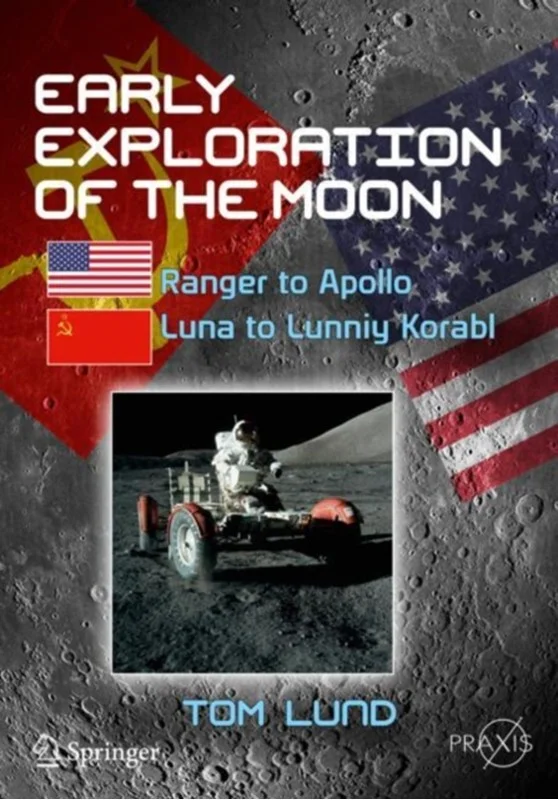Luna 2, launched by the USSR in 1959, was the first spacecraft from Earth to land on the moon. That first voyage was followed by increasingly capable lunar exploration spacecraft from Russia and the United States. A total of 36 successful lunar exploration missions were conducted from 1959 to the last Apollo manned exploration in 1972 and the final travels of the Lunokhod lunar rover in 1973. Of all the missions, that of Apollo 17 was the pinnacle of manned space exploration. Apollo 17 astronauts traveled 21 miles on the lunar surface in a dune buggy-type vehicle, stopping frequently to explore and gather samples.
The spacecraft that enabled lunar exploration were ingenious, and reflected the best efforts of talented people working with the technology of the day. This book showcases the engineering involved in those incredible machines. The spacecraft covered, and their missions, are listed below.
From the United States:
Ranger Photography en route to lunar impact
Lunar Orbiter Photography of front and back side of moon
Surveyor Soft landing, photography, and soil analysis
Apollo Manned exploration. Lunar Rover expanded range
From the USSR:
Luna 2 Photography en route to lunar impact
Luna 3 Photography of back side of moon on flyby
Luna 9 and 13 Soft landing, photography, and soil analysis
Luna 10, 11, 12, 14 Photography from lunar orbit
Luna 16, 20, 24 Soft landing, return of soil sample to Earth
Lunokhod-1, -2 Lunar roving vehicle driven from Earth
L1 Planned manned lunar flyby but only flew unmanned
L3 Planned manned lunar landing but never flew to moon
To tell the story of these spacecraft, Tom Lund draws on over 40 years work on aircraft and spacecraft systems. He was technical lead for the landing radars for the Surveyor and Apollo spacecraft, and his practical experience is augmented by masters degrees in electrical engineering, physics, and business administration.


